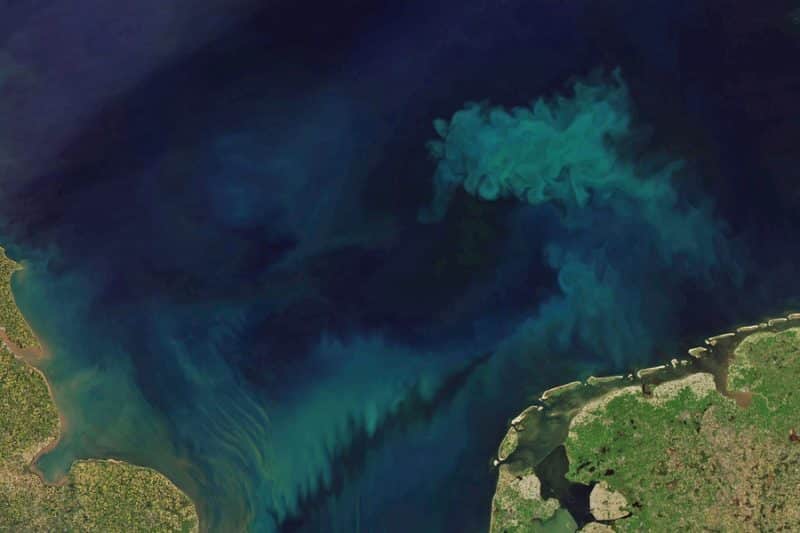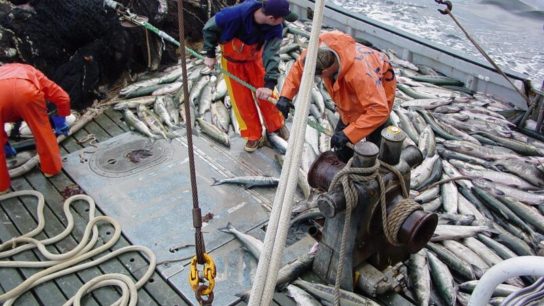In an alarming display of the far-reaching impacts of climate change, NASA satellites have revealed a striking transformation in the ocean colour. More than half of the planet’s vast oceanic expanses have taken on a verdant hue due to disruptions caused by climate change, particularly affecting marine ecosystems near the equator.
—
Over the past two decades, a remarkable shift from serene blue to vibrant green has swept across 56% of the world’s oceans, catching the attention of scientists and prompting a flurry of investigations. This subtle yet significant alteration in oceanic coloration serves as an indicator of the profound influence climate change is exerting on underwater life.
Why Is the Ocean Turning Green?
The transformation has been tracked by NASA’s Modis-Aqua satellite, which captured the gradual transition from predominantly blue to green hues in the oceans. Astonishingly, the area impacted by this colour change surpasses the landmass of the entire planet. Researchers, led by B.B. Cael at the National Oceanography Centre in Southampton, UK, have meticulously examined the data and surmise that this green tint is an outward sign of ecosystem adjustments in response to climate change. The scientists published their peer-reviewed results in the journal Nature last month.
While the precise causes of these shifts remain speculative, Cael and his team believe the likely catalyst is phytoplankton, the foundational organisms in many marine food chains. Phytoplankton are green algae that require sunlight to grow. This type of algae lies at the bottom of the food chain, and serves as a vital source, supporting the existence of larger lifeforms ranging from fish to seabirds. Phytoplankton are also crucial in producing a substantial portion of the Earth’s oxygen and maintaining atmospheric stability.
In addition, phytoplankton have a significant role in capturing carbon dioxide. Through photosynthesis, they utilise chlorophyll to absorb carbon dioxide from the air while generating energy. Consequently, researchers aim to monitor phytoplankton levels in the ocean to assess the impact of climate change on their populations. Distinguishing between green (phytoplankton-rich areas) and blue (less biologically active regions) aids scientists in gauging the abundance of phytoplankton.
As the study asserts, ‘’The effects of climate change are already being felt in the surface marine microbial ecosystem.’’
‘’I’ve been running simulations that have been telling me for years that these changes in ocean colour are going to happen,” said Stephanie Dutkiewicz, an author of the study from the Massachusetts Institute of Technology (MIT). “To actually see it happening for real is not surprising, but frightening. And these changes are consistent with man-induced changes to our climate.’’
’This gives additional evidence of how human activities are affecting life on Earth over a huge spatial extent. It’s another way that humans are affecting the biosphere,” Cael commented.
Colour-changing Oceans Could Indicate a Bigger Problem
This dramatic alteration in the ocean colour might be indicative of deeper changes within marine ecosystems. The study’s authors suggest that deeper blue hues typically point to a lower density of life, while the greener tints could signify heightened phytoplankton activity. This nuanced transformation paints a vivid picture of surface-level aquatic dynamics. However, the colour shift is further complicated by natural fluctuations in chlorophyll levels at the ocean’s surface, making it challenging to discern whether climate change is solely responsible for the shift from blue to green.
‘’The color of the oceans has changed, and we can’t say how. But we can say that changes in colour reflect changes in plankton communities, which will impact everything that feeds on plankton. It will also change how much the ocean will take up carbon, because different types of plankton have different abilities to do that,” Dutkiewicz explained. “So, we hope people take this seriously. We can now see it happening, and the ocean is changing.’’

Phytoplankton off the coast of Vancouver Island, Canada, as pictured on June 25, 2006. Image captured by the Moderate Resolution Imaging Spectroradiometer (MODIS) on NASA’s Aqua satellite. Image: Jeff Schmaltz/NASA.
Charting the Course Ahead: A New Era of Oceanic Monitoring
Scientists initially estimated that decades of observations would be needed to identify clear trends in ocean colour changes. Moreover, disparities between satellite measurement techniques have hindered data amalgamation. To delve deeper into this colour metamorphosis, NASA is set to launch the Pace mission in January 2024. This ambitious endeavour will meticulously monitor various facets of the oceanic ecosystem, including plankton, aerosol, and cloud dynamics.
In an era where climate change’s ramifications continue to unravel, the changing ocean colours serve as a poignant reminder of the interconnectedness between our planet’s delicate systems. As we strive to comprehend and combat the ecological impacts of climate change, these shifting hues stand as a call to action to safeguard the oceanic realms that are integral to Earth’s well-being.
Featured image: NASA/ Joshua Stevens/ Landsat data/U.S. Geological Survey/ MODIS data/ LANCE/ EOSDIS Rapid Response/ MIT.
You might also like: Global Warming Could Push Atlantic Past a Tipping Point by Mid-Century Under Current Emissions Scenario: Study


















